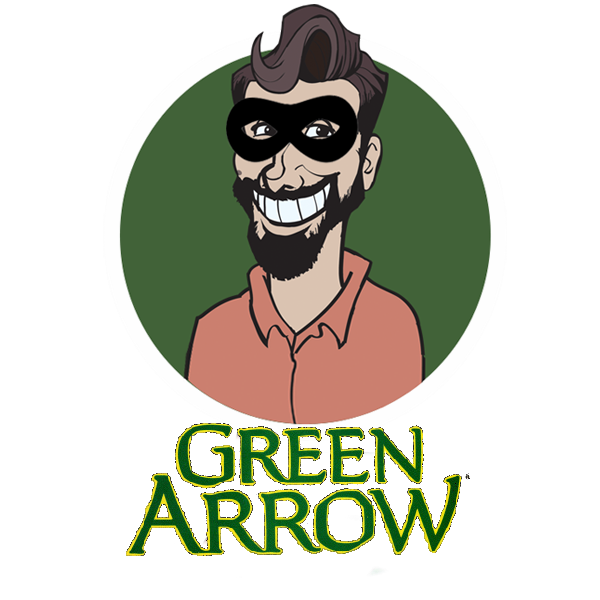 By the late 1980s, Green Arrow had conclusively shed his Golden Age persona in the Crisis on Infinite Earths event, and the groundwork had been laid for his own series. DC was getting darker, as evidenced by the previous year’s Batman: The Dark Knight Returns from Frank Miller and Lynn Varley, and it was time for Oliver Queen to abandon his pointy hat and join the real world.
By the late 1980s, Green Arrow had conclusively shed his Golden Age persona in the Crisis on Infinite Earths event, and the groundwork had been laid for his own series. DC was getting darker, as evidenced by the previous year’s Batman: The Dark Knight Returns from Frank Miller and Lynn Varley, and it was time for Oliver Queen to abandon his pointy hat and join the real world.
With a four-issue mini-series already under his belt, Green Arrow was set for his own starring role in the DC Universe, even if incoming writer and artist Mike Grell was determined to keep him isolated from the capes and powers of the world.
In this fourth chapter of The History of Green Arrow, we’ll stretch out with The Longbow Hunters, witness the first 80 issues of Green Arrow’s first ongoing series and revisit his origin (again) in The Wonder Year.
Also read:
- The History of Green Arrow Part 1 – From Golden Age to Golden Beard (1941 – 1969)
- The History of Green Arrow Part 2 – Hard Travelling Through the Wilderness Years (1970 to 1979)
- The History of Green Arrow Part 3 – Detectives and Dark Knights (1980 – 1986)
- The History of Green Arrow Part 4 – Longbow Hunting Through the Wonder Years (1987 – 1993)
- The History of Green Arrow Part 5 – At the Crossroads of Death with Connor Hawke (1994 – 2000)
- The History of Green Arrow Part 6 – Quiver through Brightest Day (2001 – 2011)
- The History of Green Arrow Part 7 – Losing the Beard: The New 52, ‘Arrow’ and the Contemporary Age (2011– )
A tale of two Mikes: The Longbow Hunters (1987)
“First Dark Knight. Now…Green Arrow: The Long Bow Hunters!”
That’s how DC Comics led their own press for Green Arrow: The Longbow Hunters in the August 1987 DC Releases (published in May of that year) newsletter, highlighting the relatively new prestige format that had made Frank Miller’s most famous work something a bit special. That the company was giving the Emerald Archer the same treatment as Batman was indicative that at long last, the character was being taking seriously and “presented in a way that will take your breath away”. The post-Crisis world meant that absolutely any DC character was up for grabs, and could be anything they wanted to be. Even Superman was rebooted the previous year in John Byrne’s now infamous The Man of Steel mini-series, a book which similarly modernised the hero’s origin.
Mike W. Barr and Trevor Von Eeden’s 1983 Green Arrow mini-series had been a commercial and critical success. Yet the solidification of Green Arrow’s place at DC in the 1980s is a tale of another two Mikes: the now legendary and influential run of Mike Grell will forever associate his name with the character, but returning DC editor Mike Gold was also fundamental in the creation of the urban hunter character as well. In 1983, Gold co-founded First Comics, where he published and edited the likes of Howard Chaykin’s American Flagg, Jim Starlin’s Dreadstar and, of course, Mike Grell’s Jon Sable Freelance. Gold’s return to DC in 1986 began a second major run of titles for the editor, and the ability to influence a number of superstar writers back to the DC roster.
Meanwhile, Grell had also been away from DC Comics for almost a decade, making waves while writing the likes of Jon Sable Freelance, Starslayer and the Tarzan comics strips for various indie publishers. Grell’s association with the character of Green Arrow began as early as 1974, when he took on art duties in the Action Comics backup stories. Later in the decade, he was the penciller and cover artist on the revived Green Lantern/Green Arrow run, following Neal Adams’ departure, sometimes co-plotting with Dennis O’Neill. Chatting with UK’s Speakeasy in April 1987 (“Slings and Arrows”, pp.10 – 11), shortly before the release of Green Arrow: The Longbow Hunters, Grell spoke about Gold’s unique hook on the character that drew him back:
“At the time I mentioned that I was interested in the Batman perhaps, but there really wasn’t anything in particular that I cared about. [Gold] turned around and said “What about Green Arrow?”. And that really excited me. We discussed the possibility, and Mike described what he had in mind for the character – an “urban hunter”. That got me hooked , and more or less provided the springboard for my approach to the character.”
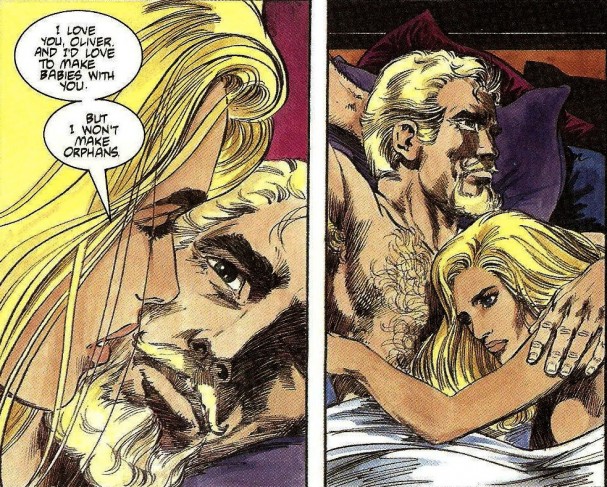 With Green Arrow: The Longbow Hunters, Grell adopts this philosophy almost immediately, shifting the action from the fictional Star City to the very real Seattle. Super powers and other heroes simply don’t exist in this world. While a killer stalks the streets of Seattle, a second archer with a vendetta is targeting rich old men. With a storyline that was ripped straight from the newspapers, Grell combined elements of actual unsolved Seattle murders with the Iran-Contra affair, reflecting the dark mirror of the late 1980s. Placing a consciously middle-aged Oliver Queen, now 43 and old enough to be a grandfather to former ward Roy Harper’s child, he and Dinah Lance/Black Canary settle into their new city with very ordinary day jobs at the Sherwood Florist. Grell sets up the notion that Queen’s biological clock is ticking, with the Emerald Archer finally wanting to marry and have children with Dinah. However, her point blank refusal to do so, because she “won’t make orphans” in their dangerous life, sparks the beginnings of a back-to-basics approach for the Green Arrow. He abandons the trick arrows and his traditional garb, adopting a now more common hood that was appropriate for Seattle’s weather. He also tested Ollie and Dinah’s relationship in ways rarely seen before in a comic book.
With Green Arrow: The Longbow Hunters, Grell adopts this philosophy almost immediately, shifting the action from the fictional Star City to the very real Seattle. Super powers and other heroes simply don’t exist in this world. While a killer stalks the streets of Seattle, a second archer with a vendetta is targeting rich old men. With a storyline that was ripped straight from the newspapers, Grell combined elements of actual unsolved Seattle murders with the Iran-Contra affair, reflecting the dark mirror of the late 1980s. Placing a consciously middle-aged Oliver Queen, now 43 and old enough to be a grandfather to former ward Roy Harper’s child, he and Dinah Lance/Black Canary settle into their new city with very ordinary day jobs at the Sherwood Florist. Grell sets up the notion that Queen’s biological clock is ticking, with the Emerald Archer finally wanting to marry and have children with Dinah. However, her point blank refusal to do so, because she “won’t make orphans” in their dangerous life, sparks the beginnings of a back-to-basics approach for the Green Arrow. He abandons the trick arrows and his traditional garb, adopting a now more common hood that was appropriate for Seattle’s weather. He also tested Ollie and Dinah’s relationship in ways rarely seen before in a comic book.
“I did what any decent soap opera writer would do,” Grell stated in a 2006 ‘director’s commentary’ for the series. “I started with a perfectly happy couple and then royally screwed up their lives”. Grell treats the couple with maturity and respect, showing them as a loving albeit flawed pairing. They live together and separately, Grell constructing their florist as a castle with distinct ‘his’ and ‘hers’ chambers. Yet he is also careful to show their communal spaces, and the easy intimacy that they share. This becomes especially important when Dinah is later captured and tortured, forcing Oliver to reassess his own code and kill the perpetrator without hesitation. Many subsequent pieces on this moment have suggested that Dinah was raped, and this was far from the creator’s intention. Indeed, Dinah isn’t even shown being hit on panel, but rather we see the impact her torture has on her physically and mentally. In the same aforementioned commentary, Grell explains this approach:
“I set out to create a situation that would change Ollie from the avowed pacifist to a man capable of killing if it’s justified. There’s a transition in one panel from the easy-going Errol Flynn Robin Hood to a man capable of killing coldly and violently. (Note that he totally ignores the guy with the arrow through his heart, except to take the knife out of his hand to cut Dinah free.)…I needed that moment in order to push Ollie over the edge and force him into the choice of whether to shoot the knife out of the villain’s hand (he had already demonstrated the ability to do so) or put an arrow through his heart.”
It was not the first time that Oliver had killed, having spent some time (back in The Flash #217 through #219) in an ashram for accidentally killing a boy. However, this moment in The Longbow Hunters almost makes the remaining aspects of the 3-part tale – a spy-thriller involving laundered money, drugs and a operative named Eddie Fyers (later both a foe and an ally) – a B-story to the emotional core. It’s the Ollie/Dinah story that we really care about, because Grell has made them real people in the midst of chaos. Grell also introduced the iconic character of Shado, who would later test the Ollie/Dinah dynamic in ways that cut emotionally deeper. Here she initially acts as his opposite number, a woman raised to be a killer with a single-minded mission of vengeance, but a prowess with the bow that rivals (and arguably exceeds) Ollie’s own. In the context of the story, she is the one that recognises the change in Ollie, noting that she can now see the killer behind his eyes. In the subsequent ongoing series, Grell would continue to explore the impact of this event on both of their lives, going so far as to have them visit a psychiatrist, and much later intertwine Ollie and Shado’s lives.
Green Arrow: The Longbow Hunters remains one of the most seminal pieces of comic book literature and art of the 20th century, not only reinventing an often undervalued character but also giving him a validity and authenticity that few of his contemporaries have ever received. Nominated for “Best Finite Series” at the 1988 Will Eisner Comic Industry Awards, alongside Frank Miller and Bill Sienkiewicz’s Elektra Assassin, it lost out to another groundbreaking piece of work: Alan Moore and Dave Gibbons’ incomparable Watchmen. Coupling Grell’s pencils with Julia Lacquement’s magnificent painted finishes (and “assistant” Lurene Haines meticulous researched and realistic backgrounds), it was a product that lived up to its initial “prestige” solicitations. In three extended issues, Green Arrow finally “grew up” and had earned the right to his own ongoing series, one that would initially last for 11 years. Indeed, the legacy was confirmed over 25 years later, when it served as the inspiration for the TV series Arrow, with the producers wisely giving a nod to the creator in the naming of the unseen Starling City Judge Grell.
- Further listening: Behind the Panels Issue 119 – Green Arrow: The Longbow Hunters
Ongoing at last (1987 – 1993)
“I’ll tell you one thing — if I could turn back the clock… I’d kill that bastard all over again.”
Off the back of the success of The Longbow Hunters, DC wasted no time in green-lighting the first solo ongoing adventures of Green Arrow. Premiering in November 1987, Green Arrow #1 (cover date February 1988) picked up almost immediately after the events of the Grell mini-series. Rather than simply throwing the newly revived character back into the DCU, Grell chose to maintain Ollie’s segregation from the super powers of the “outside” world. As part of DC’s Mature Readers line, Grell could freely deal with issues of frank and adult nature, including Dinah and Ollie’s shared trauma from The Longbow Hunters. Dinah can no longer stand physical contact from Ollie or anyone else, while Queen himself is (not) dealing with his unflinching murder of the perpetrator. In fact, Grell very pointedly addresses what actually happened to Dinah during her torture, ensuring that there is no ambiguity. In a conversation with her therapist Dr. Annie Green, the latter remarks “I don’t know why people say things like ‘At least you weren’t raped’. As if that’s the worst thing that anyone could do to you.”
In many ways, the Green Arrow ongoing series wasn’t simply a sequel to Longbow Hunters, but a spiritual successor to some of the themes first played with in the Detective Comics backup stories of the first half of the 1980s. Initially working with Ed Hannigan as artist, Grell would often run a largely visually-driven series of stories, covering a range of social issues and genres, and positioning Green Arrow as an urban hunter who was just as comfortable in an international spy affair as he was on the rainy streets of Seattle. Stories would include a child abduction, a series gang-related attacks on homosexuals across the city, commentary on AIDS, biological weapons and drug-running. Grell reintroduced Eddie Fyers as a worthy foe, one who admired Oliver even when working against him, but it wasn’t until after Grell left the book that he would develop as a friend and ally under writer Chuck Dixon. Undoubtedly, one of the moments that fans had been waiting for was the return of Japanese assassin Shado in “Here There Be Dragons” (Green Arrow #9 – #12), giving us more insight into the mysterious and sexy archer, and quite literally planting the seeds for the sequel story “Blood of the Dragon” (Green Arrow #21 – #24) a year later.
This collection of characters was so rich and varied, that readers may not have even noticed that ‘Green Arrow’ (when he was actually referred to by name) was being neatly kept out of the way of the outlandish costumed crime fighters that populated the rest of the DCU. While there were a few team-ups with other characters, most notably The Question and Batman, these often took place outside the main continuity and in the pages of specials like 1988’s Dennis O’Neil “Fables” crossover in Detective Comics Annual #1 (“The Monkey Trap”), Green Arrow Annual #1 (“Lesson for a Crab”) and The Question Annual #1 (“The Silent Parable”). When an outside character did appear in the main title, as was the case of old pal Green Lantern in “The Trail of Oliver Queen Part 2” (Green Arrow #20, July 1989), it was merely as a plain clothes as Hal Jordan. Grell wasn’t without his indulgences, including the cheeky inclusion of his own character Warlord (who looked virtually identical to Oliver Queen) in “Enter…”/”Siege” (Green Arrow #27 & #28). It builds to a climax towards the end of Grell’s run, in the super-sized Green Arrow #75 (“Auld Acquaintance”) with the appearance of a ridiculously garbed (and brainwashed) Roy Harper/Arsenal. The same issue also saw Oliver caught out kissing the much younger former street kid Marianne, and Dinah leaves him shortly after. This is the heartbreaking turning point not just for one of the few genuine relationships in comics, but a sign that the “Grell era” was almost over.
Following the departure of Grell in 1993, the series would continue for another 57 issues (covered in Part 5 of this series) with Chuck Dixon taking over as the regular series writer from Green Arrow #93 until its hiatus in 1998 with Green Arrow #137. While this run would bring with it a new Green Arrow and a memorable set of new characters, including future Green Arrow and Ollie’s son Connor Hawke, it would never quite capture the same immediacy and gritty reality of Grell’s seminal run. Grell’s mark on the character is incalculable, a bold experiment in an ongoing series that would define the future of the character just as much as Dennis O’Neil and Neal Adams did a decade before. 21st century Marvel is rightfully praised for its character-based takes on Hawkeye and Daredevil, where the superhero antics are secondary to the human drama, but in many ways Grell laid down the blueprint.
- Further Listening: Behind The Panels One-Shot – The Mike Grell Interview 2015
The Wonder Year and Shado: Song of the Dragon
Every creator that has worked extensively with Green Arrow since Jack Kirby has put a mark on the origin story, and Mike Grell was no exception. While he gave us a few panels of origin recap during The Longbow Hunters, and expanded on it during the “Sometimes a Fool Notion” story in Secret Origins #38 (March 1989), the 4-issue mini-series Green Arrow: The Wonder Year (February – May 1993) gave Grell a chance to rewrite Green Arrow’s origin story within the context of his “realistic” gritty world.
Despite this, it’s a surprisingly lighter story involving radical student groups of the 1960s and 1970s, and the long-term effects of maintaining the rage. Indeed, very little time is actually spent exploring Ollie’s time on the island, and nod adding too much more to that side of the story than those handful of panels from The Longbow Hunters. Instead, it focuses on the faked assassination attempt on a would-be presidential candidate by one of Ollie’s old flames, and Oliver’s first attempts to become a hero in an increasingly dark city. As alluded to in Grell’s previous works, this version of Ollie is friends with The Adventures of Robin Hood stunt archer Howard Hill, and his first outfit is a hired fancy dress costume. To his chagrin, his fledgling hero efforts see the media dub him “Green Arrow.” By his own admission he is doing the vigilantism out of boredom. “God knows I haven’t got anything better to do,” he quips.
From the perspective of the much later Green Arrow: Year One, or the television show Arrow that covers the same ground, Green Arrow: The Wonder Year seems positively quaint. Even compared with Grell’s own work of the years leading up to this, the soft touch applied here seems somewhat incongruous with his other version of Green Arrow and Oliver Queen. Mostly of interest to Green Arrow devotees only, as its pre-Flashpoint canonicity was kiboshed by Year One, the late Gray Morrow’s art is still a reason to investigate the four issues. Harking back to his own pulpish leanings, it’s a modern spin on a retro version of a character.
In that previous year, Grell also penned a spin-off mini-series dedicated to his most last original character, Shado: Song of the Dragon (January – April 1992). In the series, Shado returns to Japan to help a Second World War veteran close off some unfinished business with the Yakuza. It features Green Arrow in flashback, so will be of interest to collectors for that reason alone, but is intended to fill in a few of the puzzle pieces around the mysterious Shado.
Beyond the Comics
1987 was a red-letter year for Green Arrow, with the re-launch via The Longbow Hunters bringing with a whole new range of merchandise for the recently-hooded character. According to the now defunct Unofficial Green Arrow Fansite, the book came with promos in the form of posters, in-store stands and t-shirts. The posters, using Mike Grell’s art, are still largely available, although the original t-shirts are becoming more difficult to find. In 1989, during the height of Grell’s run, Green Arrow got his new hooded costume on a coffee mug from The Good Company as part of a series called Comic Book Hero Mugs. There was even a PVC figure that appeared from Spain in 1989, based on the older 1970s Neal Adams look, that appeared in a German beer commercial for Jever. With their distinctive green bottles, they used the figure to point out that “Nicht alles, was so tut wie ein Jever, schmeckt auch wie ein Jever” (“not everything that looks like a Jever tastes like a Jever”).
Perhaps one of the more obscure items from the era is a module from the DC Heroes role playing game from Mayfair Games, although the RPG was incredibly popular with fans throughout the 1980s and 1990s. Titled Green Arrow: Lines of Death, it was a two player game that allowed you to play as Green Arrow and Black Canary, stalking a killer across the city of Seattle, Washington. Using the Match-Play concept, both participants could be Player and Gamemaster by turns. With input from Mike Grell and Mike Gold, Green Arrow’s stats for his various (trick) arrows were available in the earlier modules, although statistics for Shado turned up later. A small figurine (pictured below) was available for people to physically represent their activities. The official description from the back of the now out-of-print RPG reads as follows:
Green Arrow searches for the thread that ties together seemingly random killings…
Black Canary unravels the twisted trail of drug trafficking…
A mysterious emblem of a tangled N snags both strands of investigation. Are the Heroes’ tasks separate skeins or interwoven Lines of Death?
First Match-Play Adventure!
This module is designed for tandem use by two Player Characters. In alternating encounters, Green Arrow stalks his killer while the Black Canary Player runs the adventure; Black Canary investigates undercover while the Green Arrow Player manages the NPCs.
In Part 5, we’ll hit the “crossroads” and look at the remainder of Green Arrow’s first solo run, including the change of direction under Chuck Dixon, his death and replacement with Connor Hawke, the revival under Kevin Smith and arguably his brightest days.
>>Proceed to Part 5>>
Agree or disagree? Got a comment? Start a conversation below, or take it with you on Behind the Panel’s Facebook and Twitter!
If you are an iTunes user, subscribe to our weekly podcast free here and please leave us feedback.

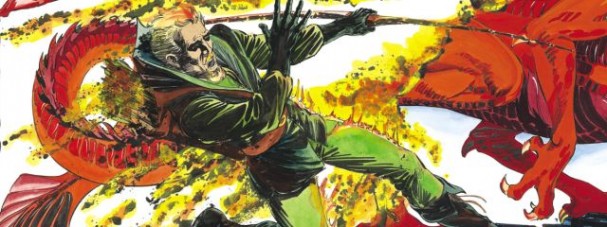
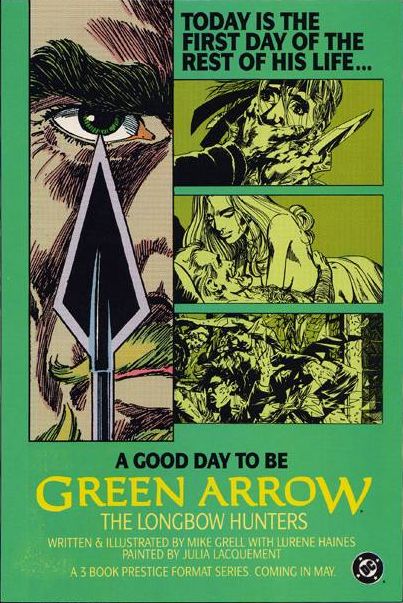
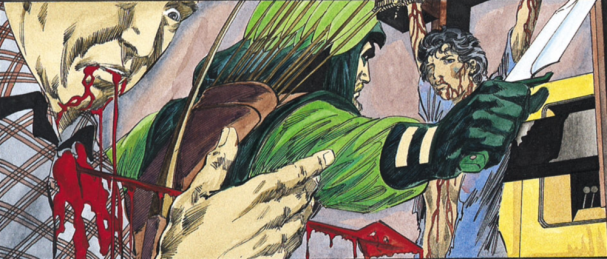

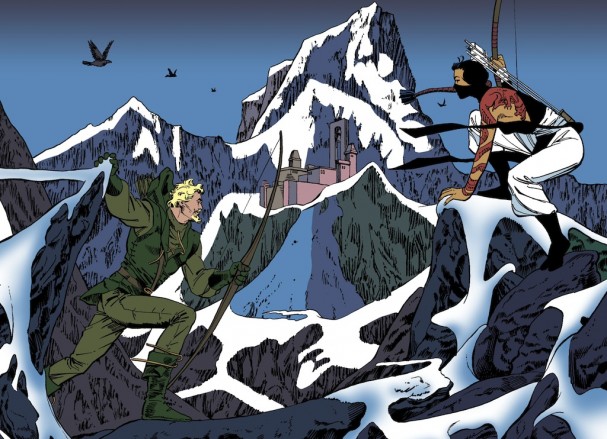

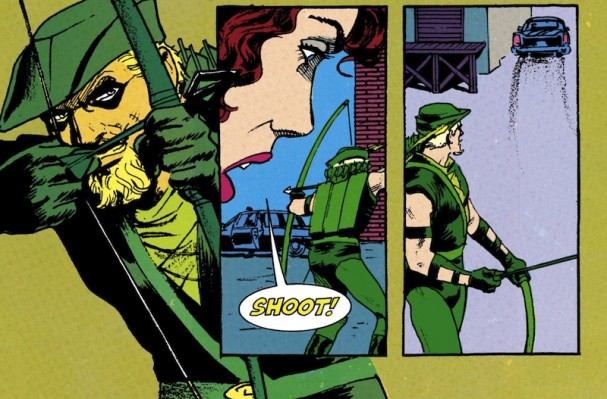


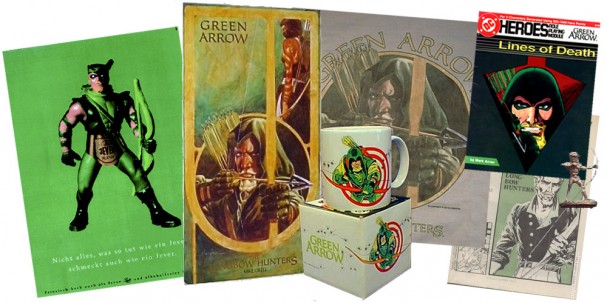

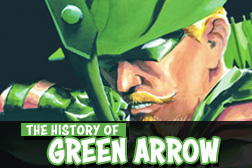
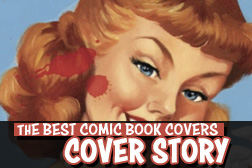
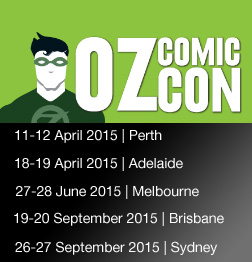
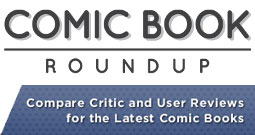




6 pings
[…] The History of Green Arrow Part 4 – Longbow Hunting Through the Wonder Years (1987 – 1993) […]
[…] The History of Green Arrow Part 4 – Longbow Hunting Through the Wonder Years (1987 – 1993) […]
[…] The History of Green Arrow Part 4 – Longbow Hunting Through the Wonder Years (1987 – 1993) […]
[…] The History of Green Arrow Part 4 – Longbow Hunting Through the Wonder Years (1987 – 1993) […]
[…] a literal crossroads for the character and the publisher. Mike Grell had just left the book, and after 80 issues of a gritty urban hunter in a world without powers, DC was keen to put him back in touch with the rest of the universe. It […]
[…] and a running commentary about the moon and a sub-plot involving a wolf are analogous to the 1988 Grell arc Hunters Moon. The 8-page preview throughout Convergence also gave us a hint of the supernatural elements that […]